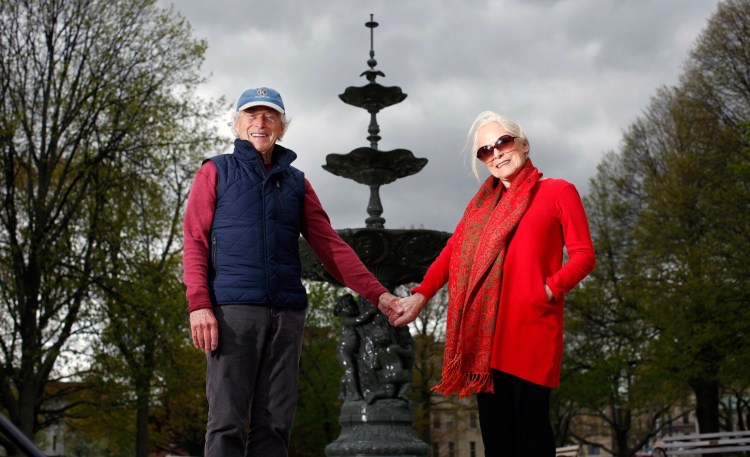Frank Reilly, president of the Friends of Lincoln Park, has been a champion of the Victorian-era park in Portland, working hard to see it restored to its former glory. His one wish?
“We want the park to live again,” he said, “to be alive with people and nice events.”
The advocacy group isn’t waiting until every last piece of the park’s historic cast-iron fence is restored, and every new park bench is in place, to see this 2 1/2-acre green space come alive again. The Friends of Lincoln Park has teamed up with the House of Music in Portland to co-sponsor a series of four free concerts in the park this summer, all featuring Maine artists.
The LoveLincolnPark concert series will kick off on July 23 with Blues Prophets, a Chicago-style blues band that has played with Muddy Waters and Koko Taylor.
On July 30, the Gypsy jazz group Mes Amis will perform a mix of traditional Gypsy, Latin and American jazz standards, as well as some original works.
Singer-songwriter Emilia Dahlin will play in the park on Aug. 6, and The Renovators will close out the series on Aug. 13.
All four concerts will be from 6 to 7:30 p.m.
The concerts are free, but Friends of Lincoln Park is hoping the events will bring more public awareness – and donations – to the restoration project that’s already well underway. The first phase restored the park’s 1871 Parisian fountain and repaired the pavement throughout the entire park.
“It was broken up, all through the park,” Reilly said. “It was difficult to walk through for years.”
Reilly said the next priority is raising $250,000 to get started on phase two, which involves the restoration of the park’s original cast iron fence and its granite piers. Portland Co. forged the fence in 1866, and restoring it is expected to cost about $1.6 million, Reilly said. The city has $400,000 in capital improvement funds set aside, but construction companies, busy with private jobs, have not been bidding on the work, he said.
Friends of Lincoln Park is trying to raise enough money to restore at least the fencing on the Congress Street side of the park. Restoring the fence, which is broken and bent in places, Reilly said, “is imperative.”
Lincoln Park is designed after the great parks of Europe – showplaces found in cities such as Paris and Vienna. The park, Portland’s first publicly owned green space, was created as a fire break after the Great Fire of 1866. “It was called Phoenix Park because it was rising from the ashes of the 1866 fire that almost destroyed the entire city,” Reilly said.
The next year, the park was renamed Lincoln Park after President Abraham Lincoln, who was assassinated in 1865. Portland residents came to love the park, holding concerts and farmers markets there, and “promenading” through the space to see and be seen by their neighbors, Reilly said.
In 1970, a quarter of the park was torn up during the widening of Franklin Street.
Historian Herb Adams said the new attention would be welcomed by the early champions of the park. “I think the city fathers and mothers of 1866 would be delighted that Lincoln Park is being used for fun and for concerts instead of for fires,” Adams said.
The Parisian fountain was restored a couple of years ago with the help of Jonathan Taggart of Georgetown, an internationally known conservator. Taggart found a duplicate of the spire that had been missing from the fountain for years in a Chapel Hill, North Carolina, antique shop. The replacement spire had been cast in the same French studio as the fountain, Reilly said. The Friends group raised $14,000 in the span of just two weeks to buy the new spire.
Other parts of the restoration are ongoing. Friends of Lincoln Park has already bought several new 6-foot park benches, the goal being to add 30 more to the park. Anyone can sponsor a bench, which includes a brass plaque for a personal inscription or dedication, for $5,000.
The two Victorian gardens at the Pearl Street entrance are also being restored. Reilly and his wife obtained 100-year-old dahlias from a friend who lives on a Maine island, and the city is now planting them in the park. “When they bloom, they are incredible – the richest shade of red you can imagine,” Reilly said.
The public is always welcome to contribute to the project, Reilly said, and there will be banners at the summer concerts to remind visitors that they can help restore the park.
Staff Writer Bob Keyes contributed to this report.
Send questions/comments to the editors.




Comments are no longer available on this story